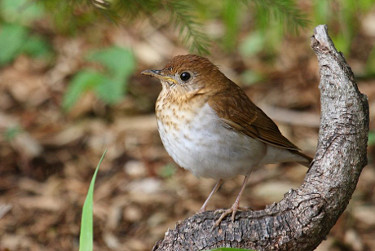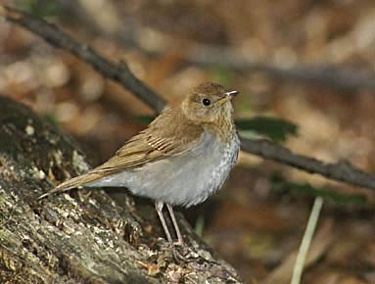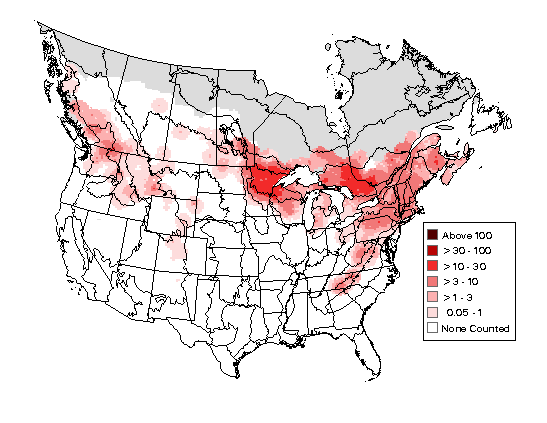Veery

Veery Information
Length: 6.5 - 7.5"
Habitat: Nests in damp deciduous or mixed woodlands with dense understory; wooded swamps and lowlands; damp ravines.
Diet: Insects and their larvae; spiders; other invertebrates, including snails, earthworms, and sowbugs.
In the fall: fruits and berries, such as blackberries, spicebush berries, grapes, wild cherries, and dogwood berries.
Additional Information
VeeryHabitat, diet, feeding behavior, nesting, migration, and conservation status of this bird. Includes range map, photos, and songs and calls. (From Audubon Field Guide)
Veery

Veery
Identification Tips
- Cinnamon upperparts in eastern United States birds, duller in western birds
- Indistinct eye ring
- Breast buffy with small dark spots, spots larger in western birds
- Underparts white with gray flanks
- Pink legs
- Thin bill with pale base
- Sexes similar
- Often forages on forest floor
- Distinctive beautiful song
The Veery resides in forests where it is more often heard than seen. It is similar to other thrushes but has smaller, less extensive spotting on the breast and uniformly light brown upperparts.
(Credit: U. S. Geological Survey)
Breeding Bird Survey Map,
2011-2015

(Image credit: USGS)
Range in New England
The Veery is found breeding throughout New England.
Winter Map from eBird
Sightings of the Veery from
Nov-Mar over the last 10 years
(2009-2019)![]()